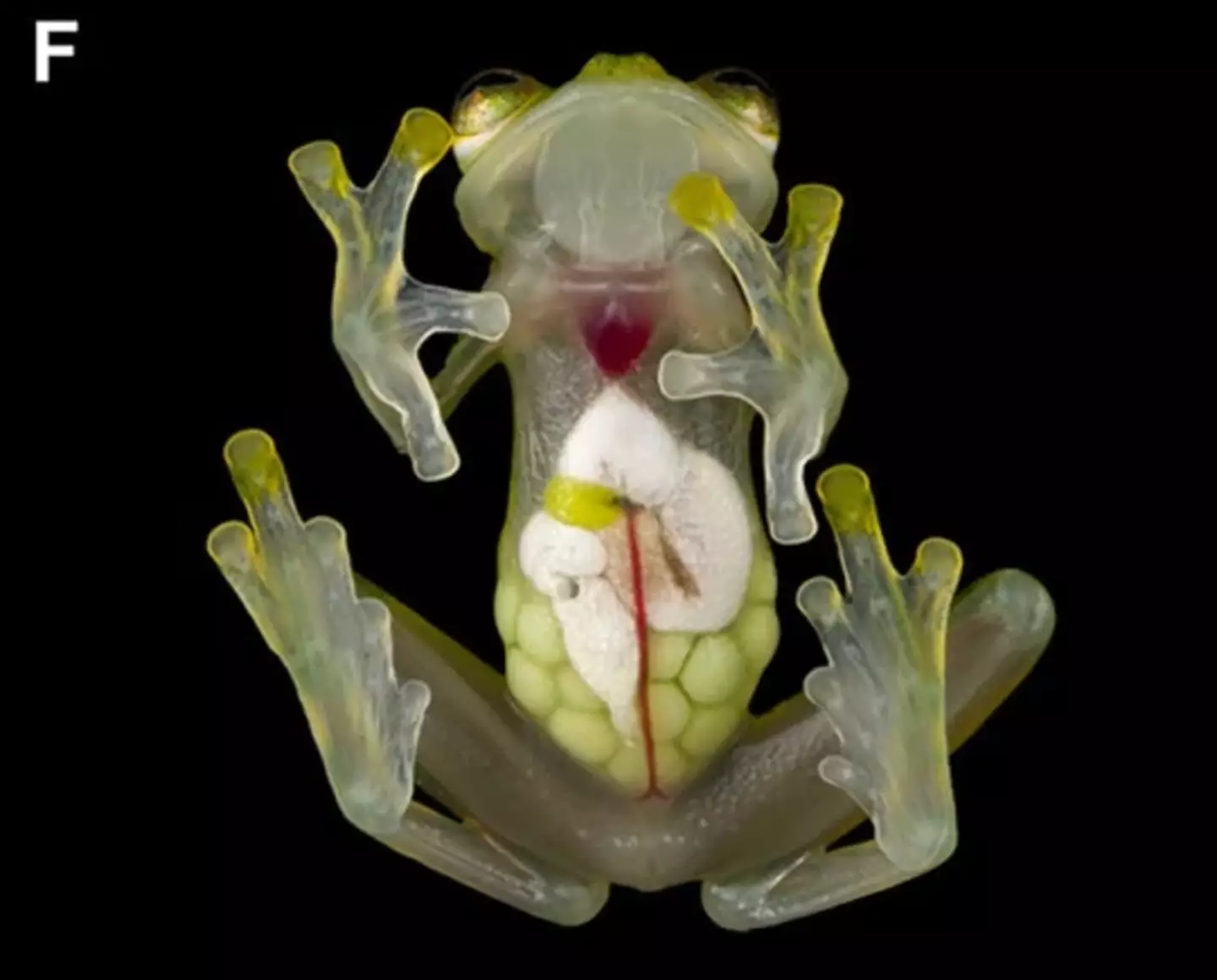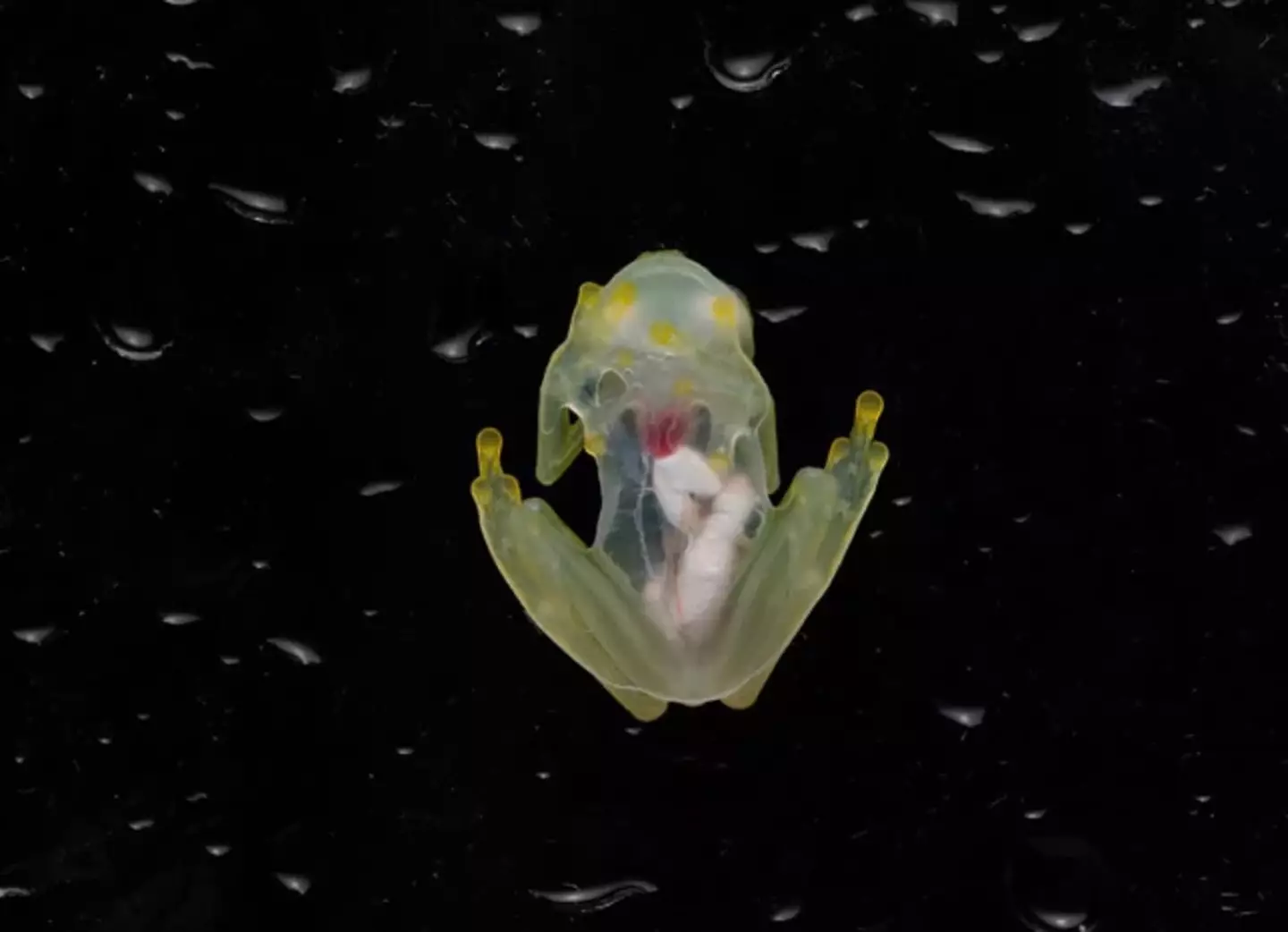
Scientists have discovered not one but two new species of endangered ‘glass frogs’ with transparent bellies, saying the find highlights the ‘cryptic diversity’ of the Andes mountain range in South America, and that the region ‘fosters much more biodiversity than we have the resources to catalogue’.
The discovery was shared in the journal PeerJ, where researchers explained how the frogs were found near active Andean mining sites, using ‘morphological, acoustic, and molecular methods’ to confirm that the new species – the Mashpi glass frog (Hyalinobatrachium mashpi) and the Nouns’ glass frog (Hyalinobatrachium nouns) – were ‘new to science’.
They wrote: “These new species provide another example of cryptic diversity in the Andes—further evidence that the region fosters much more biodiversity than we have the resources to catalog.
Advert
"Threatened by mining and other exploitative industries, these glassfrogs and many other yet-to-be-discovered Andean species highlight the dire need for effective conservation measures—especially in northwestern Ecuador.”
The two new species look similar to related species of glass frogs, thanks to the similar colour patterns and distinctive transparent abdomens, and also exhibit similar behavioural patterns.
However, after more than seven years of observation and comparative analysis of species across Central and South America, the team found that the frogs were indeed new species – adding to the diversity of the area, with more than 1,000 amphibian species are scattered across the Andes.
Advert
Becca Brunner - a PhD candidate in environmental science, policy, and management and one of the study’s first authors – said: “A lot of these sites are incredibly remote, which is one of the reasons why we were able to discover new species.
“You can walk just a couple of kilometres over a ridge and find a different community of frogs than where you started.”

Brunner’s co-first author Juan M. Guayasamín, an evolutionary biologist a professor at Universidad San Francisco de Quito in Ecuador, said identification of H. mashpi and H. nouns exemplifies the region’s ‘cryptic diversity’, adding: “The problem is not finding new species, the real challenge is having the time and resources to describe them. Taxonomists are an endangered kind of scientist.”
Advert
According to a press release from Berkeley Rausser College of Natural Resources, biologists initially confused H. mashpi with H. valerioi - a lowland glass frog - due to their strong physical resemblance. However, by comparing comprehensive DNA samples and call recordings with similar species in Central America, Colombia and other areas of Ecuador, Brunner and Guayasamín were able to ‘discern that the similar individuals were actually two unique species’.

Brunner found she could analyse recorded H. mashpi calls to determine differences in frequency, duration and timing, explaining: “When you analyse the different call characteristics of other glass frogs, you can tell that the calls of H. mashpi don’t overlap. In other words, its call is the most distinguishing characteristic for the species.”
The researchers expressed their concern over exploitative and extractive mining threatening Andean biodiversity, with H. mashpi and H. nouns both located in forest regions that have suffered agriculture-related deforestation in recent decades.
Advert
As such, Brunner and Guayasamin have recommended listing both species as ‘Endangered’ under guidelines established by the International Union for Conservation of Nature.

“The few remaining patches are now under the pressure of mining activities, which are highly polluting and have the opposition of numerous local communities,” Guayasamín said.
Brunner added: “If a mining company came in and destroyed the few streams where we know these frogs exist, that's probably extinction for the species."
Topics: Animals